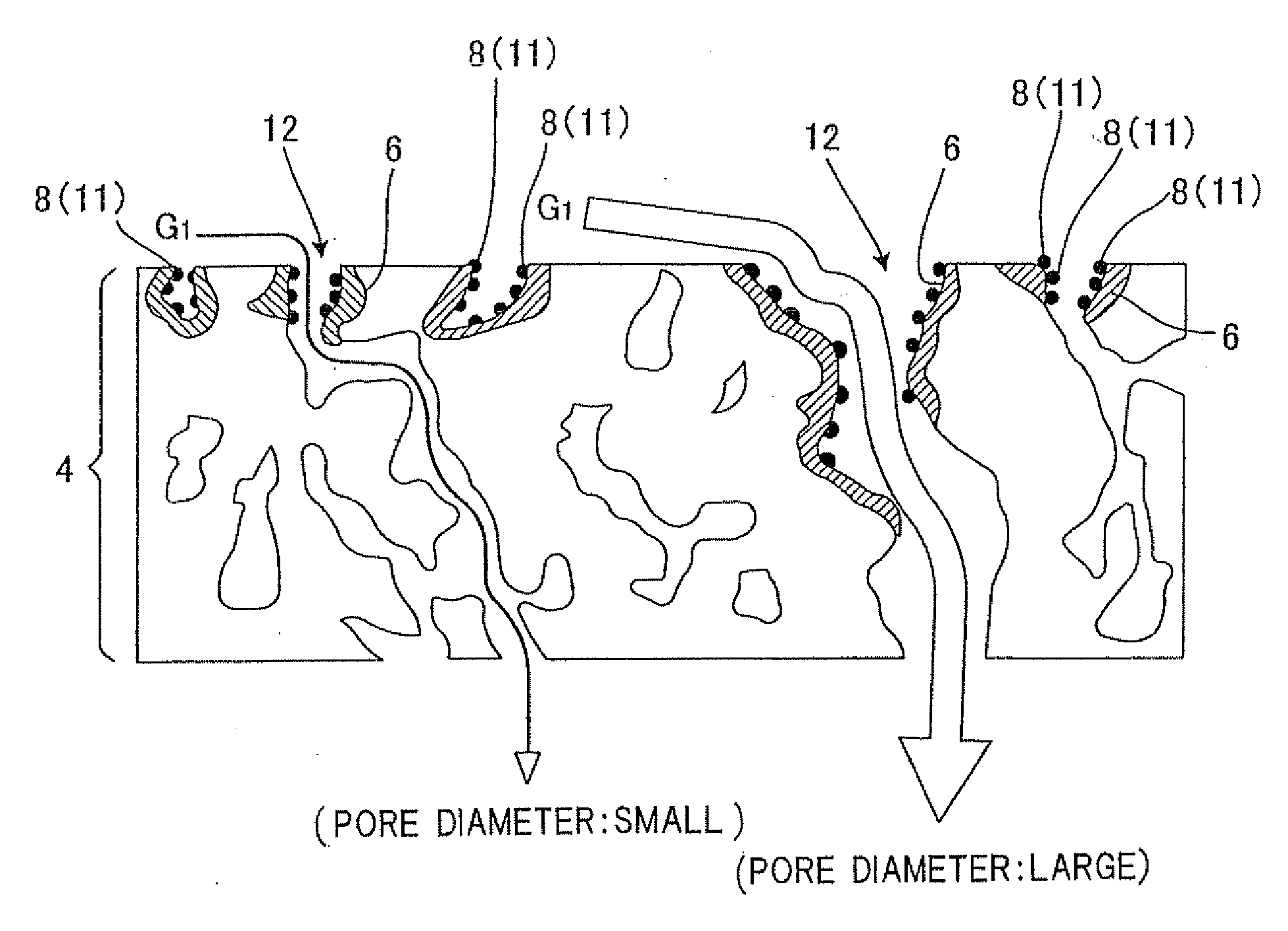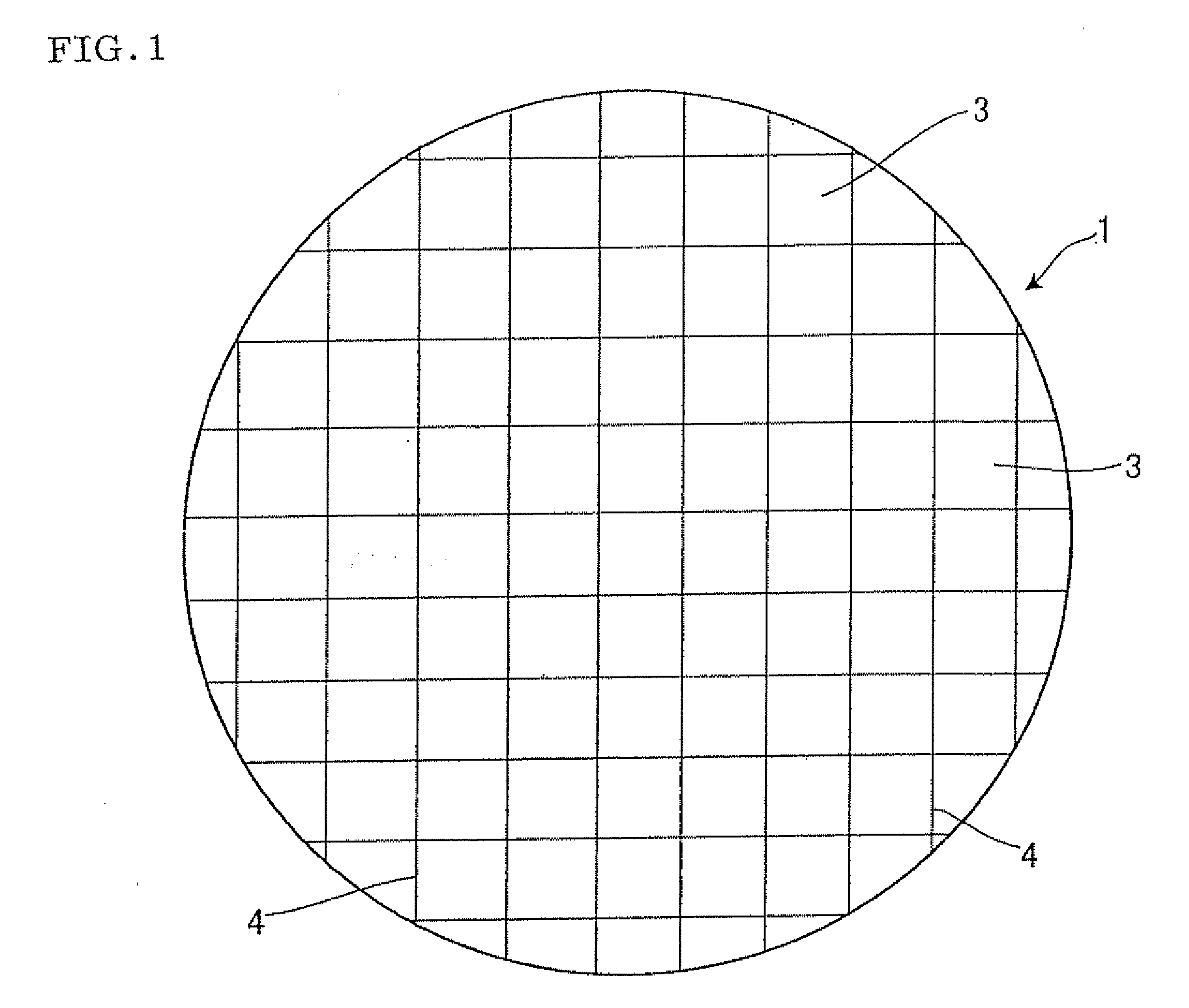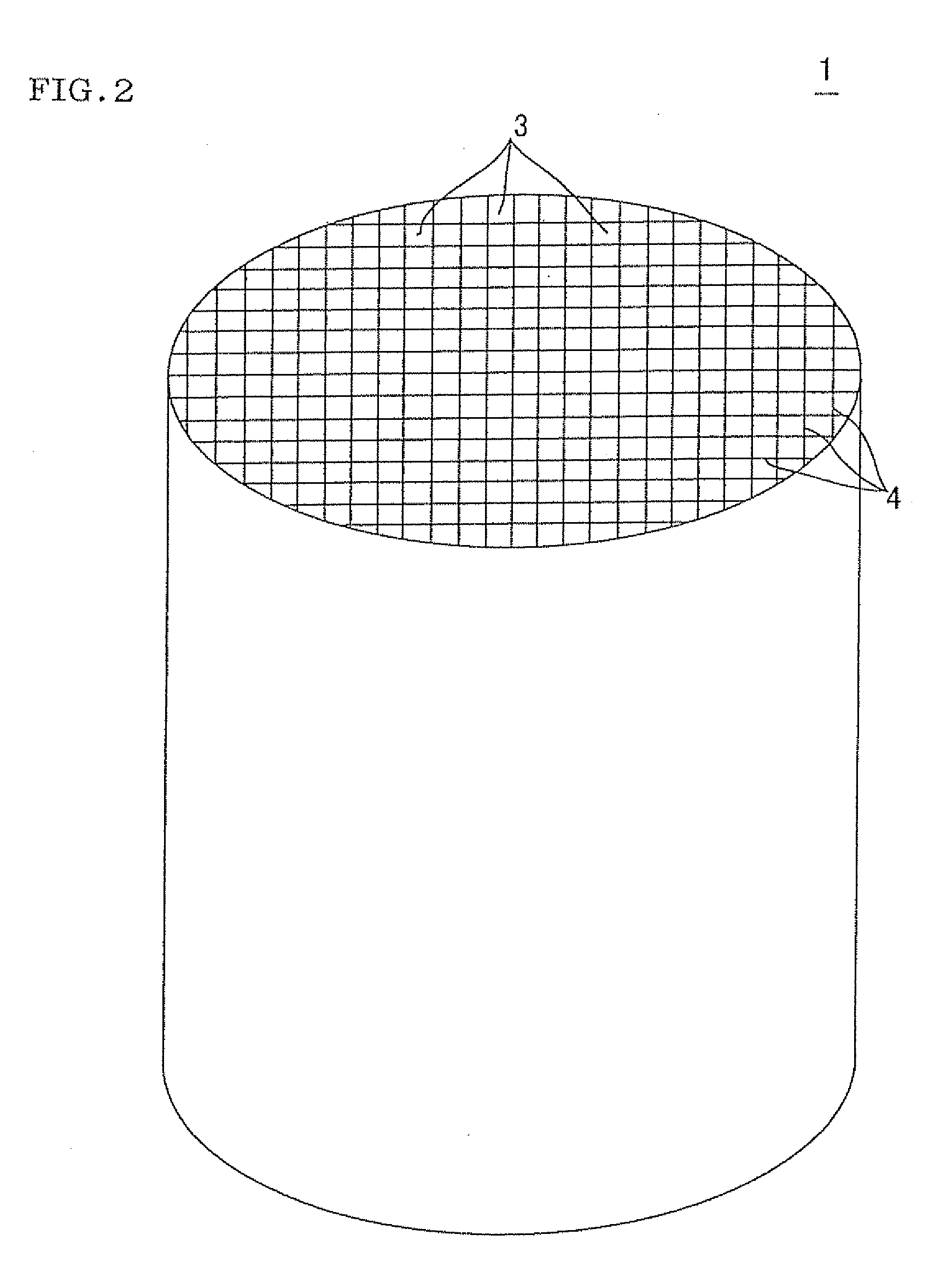Catalytic diesel particulate filter and manufacturing method thereof
a technology of catalytic diesel and particulate filter, which is applied in the direction of physical/chemical process catalyst, metal/metal-oxide/metal-hydroxide catalyst, and separation process, etc. it can solve the problems of incomplete combustion of soot or unburned gas, insufficient soot combustion, and the need for ceria based catalyst to burn soot, so as to improve the low-temperature activity of the catalys
- Summary
- Abstract
- Description
- Claims
- Application Information
AI Technical Summary
Benefits of technology
Problems solved by technology
Method used
Image
Examples
example 1
Integral Structure SiC
[0107]A mixed powder containing 80 mass % of an SiC powder and 20 mass % of a metal Si powder was used as a raw material, methylcellulose, hydroxypropoxyl methylcellulose, a surfactant, and water were added to this mixed powder to fabricate a kneaded clay having plasticity, and the obtained kneaded clay was subjected to extrusion forming by an extruder, thereby being formed into a honeycomb shape having an integral structure SiC (a diameter of 144 mm and a length of 152 mm, 12 mil / 300 cpsi, a porosity of 50%, an average pore diameter of 15 μm). Then, this formed article was dried by using microwaves and hot air, and this honeycomb segment formed article was subjected to firing in an oxidizing atmosphere at a firing temperature of 1700° C. for 2 hours, thus obtaining a honeycomb formed article.
[0108]Subsequently, as a ceria based catalyst, ion-exchanged water, 6 g / L of a cerium oxide, 1 g / L of a zirconium acetate, and 3 g / L of a praseodymium oxide were mixed and...
example 2
Bonded Structure
[0114]A mixed powder containing 80 mass % of an SiC powder and 20 mass % of a metal Si powder was used as a raw material, methylcellulose, hydroxypropoxyl methylcellulose, a surfactant, and water were added to this mixed powder to fabricate a kneaded clay having plasticity, and the obtained kneaded clay was subjected to extrusion forming by an extruder, thereby obtaining sixteen 35-mm-square segments. Preliminary firing for degreasing was effected in an oxidizing atmosphere at 550° C. for 3 hours, the obtained honeycomb segments were entirely bonded by using a predetermined bonding material, and then firing was carried out in the oxidizing atmosphere at a firing temperature of 1400° C. for 2 hours. Additionally, an outer peripheral portion was ground to obtain a honeycomb segment of a diameter of 144 mm and a length of 152 mm. A cell structure of the obtained honeycomb segment has 12 mil, 300 cpsi, a porosity of 50%, and an average pore diameter of 15 μm.
[0115]Then, ...
example 3
Structure having High Inlet Cell Capacity
[0116]A mixed powder containing 80 mass % of an SiC powder and 20 mass % of a metal Si powder was used as a raw material, methylcellulose, hydroxypropoxyl methylcellulose, a surfactant, and water were added to this mixed powder to fabricate a kneaded clay having plasticity, and the obtained kneaded clay was subjected to extrusion forming by an extruder, thereby being formed into a honeycomb shape having an integral structure SiC (a diameter of 144 mm and a length of 152 mm, a porosity of 50%, an average pore diameter of 15 μm). Then, this formed article was dried by using microwaves and hot air, and this honeycomb segment formed article was subjected to firing in an oxidizing atmosphere at a firing temperature of 1700° C. for 2 hours, thus obtaining a honeycomb formed article. There was obtained a honeycomb structure having a cell structure that has an octagonal shape at an inlet (a gas inlet), a square shape at an outlet (a gas outlet), 12 m...
PUM
| Property | Measurement | Unit |
|---|---|---|
| pore diameter | aaaaa | aaaaa |
| porosity | aaaaa | aaaaa |
| diameter | aaaaa | aaaaa |
Abstract
Description
Claims
Application Information
 Login to View More
Login to View More - R&D
- Intellectual Property
- Life Sciences
- Materials
- Tech Scout
- Unparalleled Data Quality
- Higher Quality Content
- 60% Fewer Hallucinations
Browse by: Latest US Patents, China's latest patents, Technical Efficacy Thesaurus, Application Domain, Technology Topic, Popular Technical Reports.
© 2025 PatSnap. All rights reserved.Legal|Privacy policy|Modern Slavery Act Transparency Statement|Sitemap|About US| Contact US: help@patsnap.com



